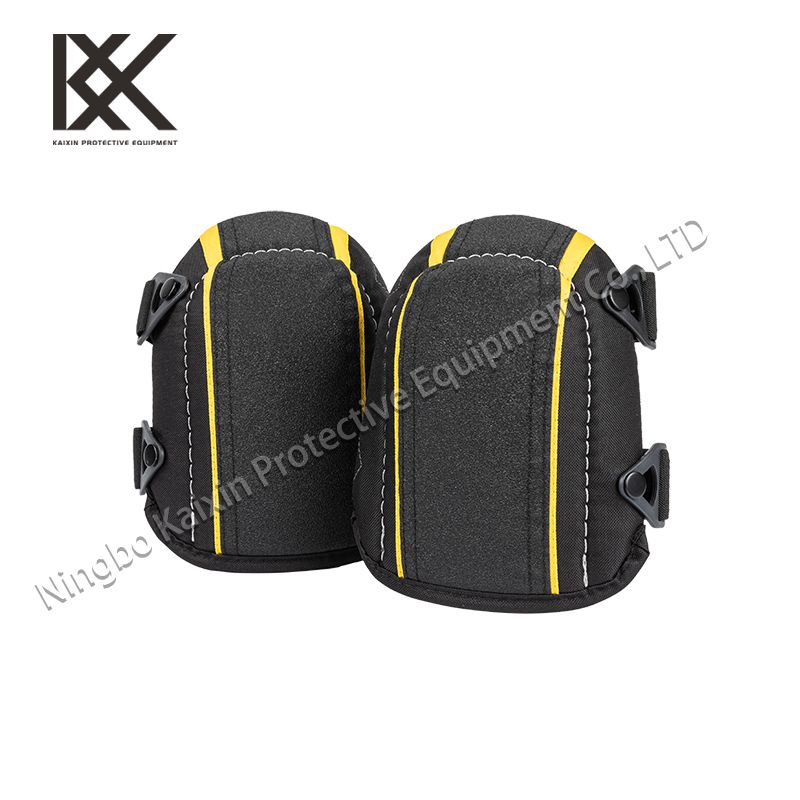Do you know how to use knee pads correctly?
2025-10-09
Because everyone's exercise habits and physical fitness vary, it's important to thoroughly understand the role of knee braces to find the most suitable method for their use.
Knee braces are generally used for two purposes: 1. Post-injury pain relief and immobilization 2. Sports protection
1. Post-injury use
For example, a meniscus injury might require a hinged knee brace, while patellar problems might also require a specialized patellar stabilization brace. These can help relieve knee pain, reduce swelling and pain, or stabilize the knee.
During the recovery period, the duration of wear and use of the brace should be determined by your doctor; the duration is not fixed.
2. Sports protection use
Mainly used during exercise or physical labor, wearing a compression band or knee brace can stabilize the knee (patella), reduce excessive patellar strain, and prevent further knee injuries.
It is important to choose the appropriate knee brace based on the intensity of your exercise. For example, consider a professional volleyball player, an enthusiast who jogs 5 kilometers daily, and an elderly person who strolls in the park daily. Their physical conditions, exercise intensity, and impact on the knees during these activities all differ, all of which influence the choice of knee brace and the duration of wear.
Therefore, all professional knee braces are categorized by activity intensity or attributes. For example, the professional protective gear brand Ningbo Kaixin categorizes its protective gear into tactical and work knee braces.
If you regularly engage in exercise, such as hiking, jogging, or working out, or if you have knee degeneration but still need to walk daily, you can choose a work knee brace.
These knee braces are less oppressive but still provide knee joint stability. They can be worn long-term, but it's not recommended to exceed two to three hours per day. Remember to remove them after exercise or labor to protect your knees while ensuring muscle exercise.

Knee Brace Wearing Methods
1. Wearing the Knee Brace Outside Your Pants
This is the most commonly used wearing method because it's extremely convenient and provides protection just by wearing it. It reduces impact force on the knees during exercise, providing better protection, and it also provides a certain degree of warmth. Therefore, this wearing method has been widely praised by users.
2. Wearing the Knee Brace Between Clothing
This wearing method is often used in winter, when people wear more clothes. Wearing the knee brace between clothing provides both protection and warmth.
3. Wearing the Knee Brace Directly on the Skin
Specific Wearing Methods
Adjusting the Position: Place the knee brace over the knee, ensuring that its center is aligned with the kneecap (patella). The upper and lower edges of the knee brace should accommodate the full range of flexion and extension of the knee joint. They should not be too high to interfere with thigh muscle movement, nor too low to effectively protect the knee joint. Generally speaking, the upper edge of the knee brace should be approximately 1-2 finger widths below the thigh, and the lower edge should extend approximately 1-2 finger widths above the calf. Adjust the tightness: When wearing a knee brace, pay attention to the appropriate tightness. If it's too loose, it won't provide effective support and protection and will easily shift; if it's too tight, it will affect blood circulation and cause leg discomfort. The correct tightness should be such that you can easily insert a finger after wearing it. This ensures that the brace fits tightly to the knee without causing excessive pressure on the leg.
Small details of wearing knee pads
| No. | Precautions |
|---|---|
| 1 | Ensure the knee joint area is clean, dry, and free of injuries or inflammation. |
| 2 | Choose the appropriate type and size of knee brace to ensure it fits and stabilizes the knee joint. |
| 3 | Adjust the tightness of the knee brace to ensure it is snugly fitted without being too tight. |
| 4 | Avoid excessive reliance on the knee brace to prevent muscle atrophy and joint stiffness. |


